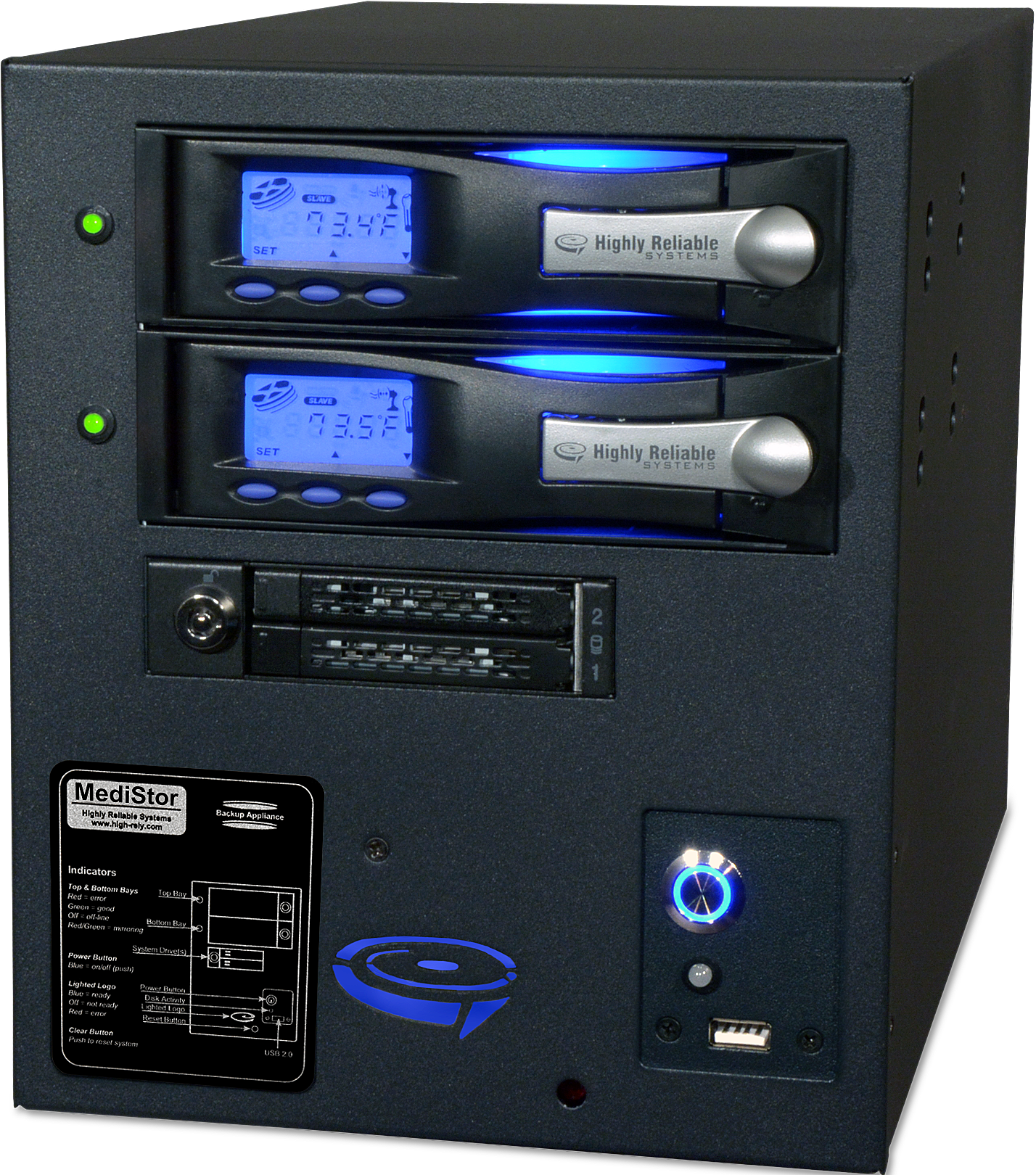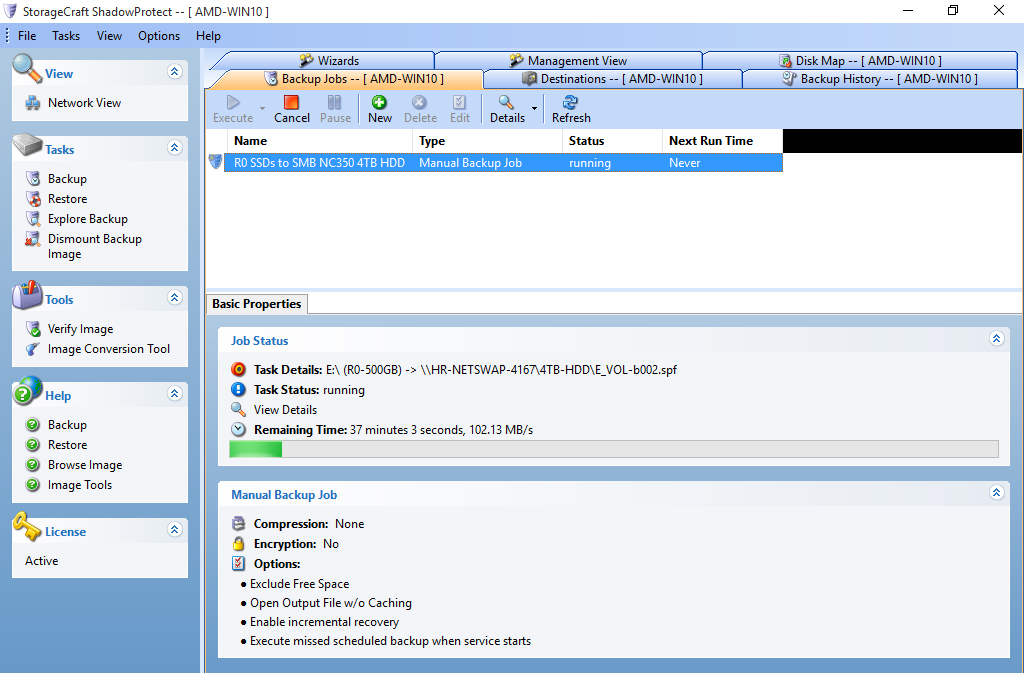NAS System Speeds vs DAS Backup Performance
By Olin Coles for Highly Reliable Systems
While many people are choosing to backup data across the Internet to the cloud, others prefer retaining data within physical reach on a backup appliance. This makes good business sense, considering that when disaster strikes the speed of transfer from cloud storage could take days compared to hours for a backup appliance. When it comes to most modern server computers, their backup data is either streamed in pieces over the Internet to the cloud, or transferred onto storage media that’s either directly connected or attached to the local network. In this article we’ll document the performance of local storage by doing real world backup benchmarking using a popular backup program.
For this performance testing, we’ll begin by looking at the backup process, and how it’s impacted (or limited) by NAS speeds or DAS performance. We believe that an average Windows server in 2015 holds around 200GB of data (average server size goes up over time). Many administrators maintain a daily incremental backup cycle, and refrain from doing “full” backup jobs because the job can take more than 12 hours.
As can be seen in the screenshot above data going to any of our Gigabit Ethernet connected NetSwap backup systems using StorageCraft ShadowProtect occurs at around 100MB/s. At this data rate, a 200GB average server would only take about 33 minutes to a single backup disk. Using single High-Rely disks have the advantage that physical media (and the data) can then be removed from the NAS backup system and preserved at an offsite location to ensure ‘air gap’ security. If your data set is much larger than 200GB (i.e. in data intensive industries dealing in video or photos) the time needed for backup to the cloud is even more impractical. Cloud backup forces you to an incremental upload scheme (continuous incremental forever) with a synthetic roll up. With large data sets (multi-Terrabyte servers), Direct Attached Storage (DAS) or 10GigE NAS speeds with removable drives may be required for periodic full backup.
A Network Attached Storage (NAS) system such as our NetSwap NC350 can provide multiple layers of protection including local, removable, and cloud storage. In our higher end models the box provides yet another layer of protection, “Disaster Recovery”. These machines are capable of becoming an emergency server (often called a BDR or Backup and Disaster Recovery box).
You can expect even faster backups if your backup appliance was configured with 10GigE and the destination disks were RAID-6 or RAID-10. These more sophisticated arrays provide more efficient data protection (in the sense that they use fewer drives for a given array). They may also increase speed by using multiple spindles. These modes are supported on the new Netswap 400 and 800, but the disks are trayless and meant to stay in the array on site (not hot swapped), meaning the cloud is the most practical way to get data offsite on these models.
High-Rely also offers several DAS appliance models. These connect to server computers via SuperSpeed USB 3.0 or eSATA ports, and transfer speeds to a single disk often reach over 185MB/s which translates to around 666 GB per hour. Again, this result is reasonable when you realize that the fastest SATA connected hard drives benchmark just over 200MB/s. So with the slight overhead of USB and real world backup software, the 185MB/s result is very good. At this speed a 6TB backup job can be completed in as little as nine hours, which is well within the window of a nightly backup.
The numbers above and the summary below reflects in house testing using StorageCraft’s Shadowprotect. For these tests we used 200GB of duplicated Windows 10 ISO’s stored on dual SSDs using RAID-0 as the “source”. This data was backed up to a single 4TB hard disk installed in a High-Rely Netswap or DAS backup appliance. You can see that backing up to a NAS tops out around 100MB/sec, which is likely a limit of Gigabit Ethernet rather than the NAS hardware or destination drive. The theoretical maximum of Gigabit Ethernet is around 125MB/sec, so a real world result of 100MB/Sec is entirely believable. As mentioned above, you could increase NAS performance using a 10Gigabit Ethernet card, in which case the bottleneck would probably become the speed of the single destination hard disk.
| NAS | 1GbE SMB (Windows Share) Protocol to a 4TB HDD in NetSwap NC350 | Max write speed 102 MB/s or 367 GB/Hr |
| NAS | 1GbE iSCSI (Block level) Protocol to a 4TB HDD in NetSwap NC350 | Max write speed 95MB/s or 342 GB/Hr |
| DAS | eSATA-II connection to a 4TB HDD in Tandem DC200 | Max write speed 185MB/s or 666 GB/Hr |
| DAS | USB 3.0 connection to a 4TB HDD in Tandem DC200 | Max write speed 185MB/s or 666 GB/Hr |
Compare the numbers above to a “pure cloud” backup service to see why local storage makes sense. Assuming a fast cable Internet service with 10MB/s upload speeds capable of sending nearly 4GB to the cloud per hour, a 200GB data set could take 50 hours (2.1 days). This makes the cloud less suitable for large data backup jobs, based purely on time taken to stream the files and without regard for post-transfer security.




